Historical Architecture of Grosse Pointe – the Grosse Pointe Yacht Club.
Those of us who drive Lake Shore on a regular basis always enjoy the sight of the GPYC. Even from Lake Shore Road, one can’t help marveling at the clubhouse with its imposing Venetian architecture and soaring187-foot bell tower — especially on a foggy day when the tip of the steeple pokes above the mist like a metallic Matterhorn.
The yacht club was founded in 1914 by two dozen sailing and iceboating enthusiasts. In those days, the club was as much focused on competitive iceboating as it was on warm weather sailing. But for more than a decade after its founding, the club was an organization without a home. Club meetings were held at members’ residences or at the Grosse Pointe Shores municipal building.
The club’s existence was timely nevertheless. During the 1920’s the Grosse Pointes were rapidly changing from a summer retreat for wealthy Detroiters to a community of year-round homes. With the growth came the desire for a yacht club with a harbor in the community. By 1926, a building committee was formed, and a piece of land was purchased from member Clarence Ayres for $28,000, to be paid as the club was able. At the same time, the club leased an adjoining 90- by 520-foot plot from the Shores, thus creating the land needed to build on.
By 1927, under Commodore John H. French, the club was planning the construction of a clubhouse and harbor with an estimated budget of $200,000. Club leaders wanted a facility that would be grander than anything along Lake St Clair and one that would compare with the two older yacht clubs on Belle Isle (the Detroit Boat Club and the Detroit Yacht Club).
The board hired Boston architect and Harvard graduate Guy Lowell to design the clubhouse and grounds. Lowell was a renowned East Coast architect whose commissions included a number of acclaimed buildings, e.g., the Boston Museum of Fine Art and the New York Supreme Court building, along with many distinctive residences.
Aside from his architectural skills, Lowell was also an accomplished saltwater sailor, the winner of an international regatta in Germany and a member of the U.S sailing team in Barcelona.
After submitting initial sketches and being awarded the job on January 17, 1927, Guy Lowell died at sea in the Spanish Madeira Islands just three weeks later. Since his plans were not fully developed, they were completed by two associates, Ralph Henry and Henry Richmond, who formed their own architectural firm to oversee completion of the task.
But even before construction began, cost estimates began to skyrocket, soon reaching $500,000. The new architects were given urgent orders to scale back the design, to get costs down to $350,000. In 1928, plans were finalized and construction of the clubhouse, grounds and harbor got underway at an estimated $380,000. The new harbor was opened for use that same year.

On July 4,1929, the GPYC’s elegant 18th century Italian Renaissance-style clubhouse, clad in rough-finished stucco, was officially opened amid great fanfare. Atop the building was a reddish-brown tile roof, punctuated by a towering steeple that was meant to contrast with the flatness of the surrounding terrain and lake. The finished work was unsurpassed by anything on the lake and was acclaimed as one of the finest yacht clubs in the country.
The gated entrance to the club sets the stage for what visitors can expect to find inside. The Main Dining Room is octagon-shaped and is positioned so that five sides have a panoramic view of the harbor and lake. The room has been described as “one of the most cheerful large rooms ever designed.” Large round windows in the vaulted clerestory overhead allow light to flood into the room, which is surrounded by marble columns. The second-story ballroom, with its massive stone walls and 29-foot-high ceiling, is graced by three ornate bay windows overlooking a garden courtyard.
When the clubhouse was completed in 1929, it was unquestionably luxurious. But its luxury came with a price. When the doors opened, the club was nearly a million dollars in debt. Three months later, the stock market crashed, setting off the Great Depression which devastated the nation for an entire decade.
The board tried valiantly to keep the club afloat during the Great Depression. But by 1935 the mortgages proved to be too much, and the clubhouse went into receivership.
In 1938, as the economy recovered, the clubhouse was reclaimed from creditors by a group of former and soon-to-be members for approximately $100,000. Commodore George Slocum, who had directed the club’s closing, now had the pleasure of guiding its reformation. The doors reopened and members began to rejoin. The club was just achieving stability when World War Two intervened. The war sent GPYC members off to serve their country, while rationing of critical materials such as gasoline and food severely restricted boating and social activities. Even so, the club went on.
When the war ended in 1945, the GPYC began a steady climb to reclaim its status as one of the premiere yacht clubs in the country. Post-war America was soon booming and so was the club.
The economic growth of the late twentieth century brought sustained prosperity to the club, Membership numbers grew steadily in the 1950’s and 1960’s, and by the 1990’s the roster had topped one thousand. Upgrades to the clubhouse, grounds and harbor occurred regularly during the period to meet the growing needs of a recreation-minded culture. What had begun as an enclave for the well-to-do was now a family-friendly club. In 1986, a new North Wing was added to the clubhouse, doubling the size of the kitchen. The club bowling alleys were completely revamped in 1990 and, in 2003, a new eight-lane Olympic-size swimming pool was constructed. Throughout recent decades, special emphasis has been given to tennis, swimming and sailing programs for the children of members. Significant upgrades were done to the southeast portion of the harbor in 2012, providing new dockage for 100-plus-foot yachts.
In 1997, the Grosse Pointe Yacht Club was named the number-one yacht club in America by a nationwide survey of club professionals. It was a distinction the club would hold for the next 15 years.
Through World War and Depression, thick and thin, good times and bad, the GPYC has managed to stay the course, ever true to its mission statement of being “a premiere private yacht club, among the finest in North America, also providing high-quality family and social programs to its members.”
Indeed, the more some things change, the more they stay the same. And that, for sure, is true of the Grosse Pointe Yacht Club.
Written by Katie Doelle
Copyright © 2015 Katie Doelle

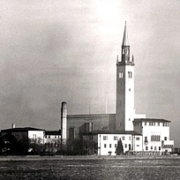
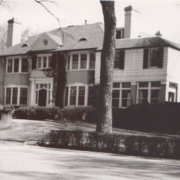
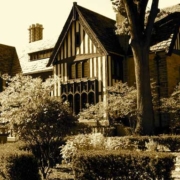
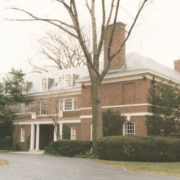
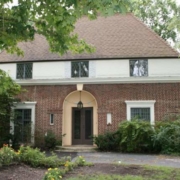
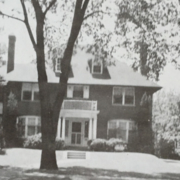
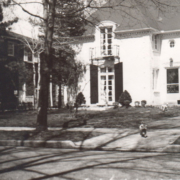
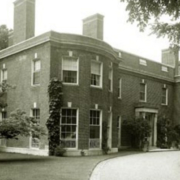
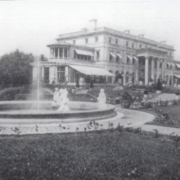
Leave a Reply
Want to join the discussion?Feel free to contribute!